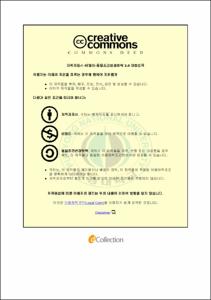리튬이차전지 양극소재용 LiMnBO3의 전기화학적 사이클 특성과 용량 저하에 관한 연구
- Alternative Title
- A study on the cycle performance and capacity fading mechanism of LiMnBO3 as a cathode material for Li-ion batteries
- Abstract
- Recently polyanion-based materials (PO, BO, silicate, etc.) have been studied as cathode materials for rechargeable lithium-ion batteries due to their advantages over the commercial metal oxide cathode materials (LiCoO, Li(NiCoMn)O, etc.): low cost, thermal and chemical stability and low toxicity.
However polyanion-based cathodes, such as LiFePO, have some problems of low theoretical capacity(170 mAh g) due to their high molecular weight compared to other metal oxide cathode materials(~280 mAh g). Therefore, alternative polyanion-based cathode materials of higher energy density, including silicates and borates, have developed due to its relatively low energy density.
LiMnBO is highlighted as a prospective cathode materials for their high theoretical capacity of 222 mAh g. Moreover boron is abundance material in the earth’s crust and has slightly less electronegativity than phosphorous. Although LiMnBO has large theoretical capacity, its electrochemical properties have not been satisfied for the lithium rechargeable batteries.
In this work we have synthesized LiMnBO and lithium excess LiMnBO to improve the electrochemical properties such as capacity and cycleability by solid-state method. The synthesized materials have been characterized using X-ray diffraction, scanning electron microscope(SEM) image and charge-discharge profile analysis. Also we used Ex-situ X-ray diffraction to compare cycle performance of the synthesized materials and the thermal stability of LiMnBO and LiMnBO was studied using Time-resolved X-ray diffraction.
- Issued Date
- 2015
- Awarded Date
- 2015. 2
- Type
- Dissertation
- Publisher
- 부경대학교 일반대학원
- Alternative Author(s)
- Cho Hae-In
- Affiliation
- 부경대학교 일반대학원
- Department
- 대학원 재료공학과
- Advisor
- 정해용
- Table Of Contents
- 목 차
Abstract
1. 서론
2. 이론적 배경
2.1 리튬이차전지
2.1.1 리튬이차전지 개요
2.1.2 리튬이자천지 원리
2.2 리튬이차전지의 구성
2.2.1 양극활물질
2.2.1.1 층상구조 화합물
2.2.1.2 스피넬 화합물
2.2.1.3 올리빈 화합물
2.2.1.4 보레이트 화합물
2.2.2 음극활물질
2.2.3 전해질
3. 실험방법
3.1 양극 활물질 합성
3.2 전극 제조
3.3 전지 조립
3.4 전기화학적 특성 평가
3.5 in-situ / ex-situ X-ray diffraction
3.6 Time resolved X-ray diffraction
4. 실험 결과 분석 및 고찰
4.1 합성 비율에 따른 LiMnBO의 구조 분석
4.1.1 결정구조 분석
4.1.2 미세구조 분석
4.2 합성 비율에 따른 LiMnBO의 전기화학적 특성
4.2.1 전기화학적 특성
4.2.2 수명 특성
4.3 합성 비율에 따른 LiMnBO의 안정성 평가
4.3.1 X-ray diffraction을 이용한 구조 안정성 분석
4.3.2 Time-resolved X-ray diffraction을 이용한 열적 안정성 분석
5. 결론
참고문헌
- Degree
- Master
- Files in This Item:
-
-
Download
 리튬이차전지 양극소재용 LiMnBO3의 전기화학적 사이클 특성과 용량 저하에 관한 연구.pdf
기타 데이터 / 2 MB / Adobe PDF
리튬이차전지 양극소재용 LiMnBO3의 전기화학적 사이클 특성과 용량 저하에 관한 연구.pdf
기타 데이터 / 2 MB / Adobe PDF
-
Items in Repository are protected by copyright, with all rights reserved, unless otherwise indicated.